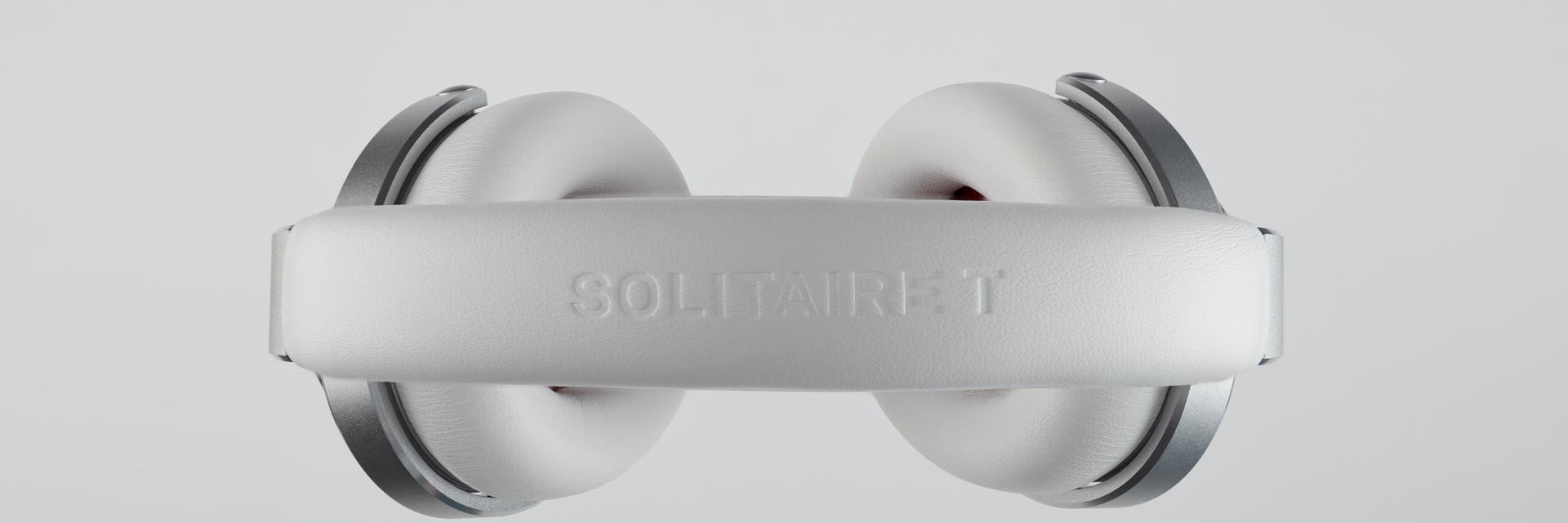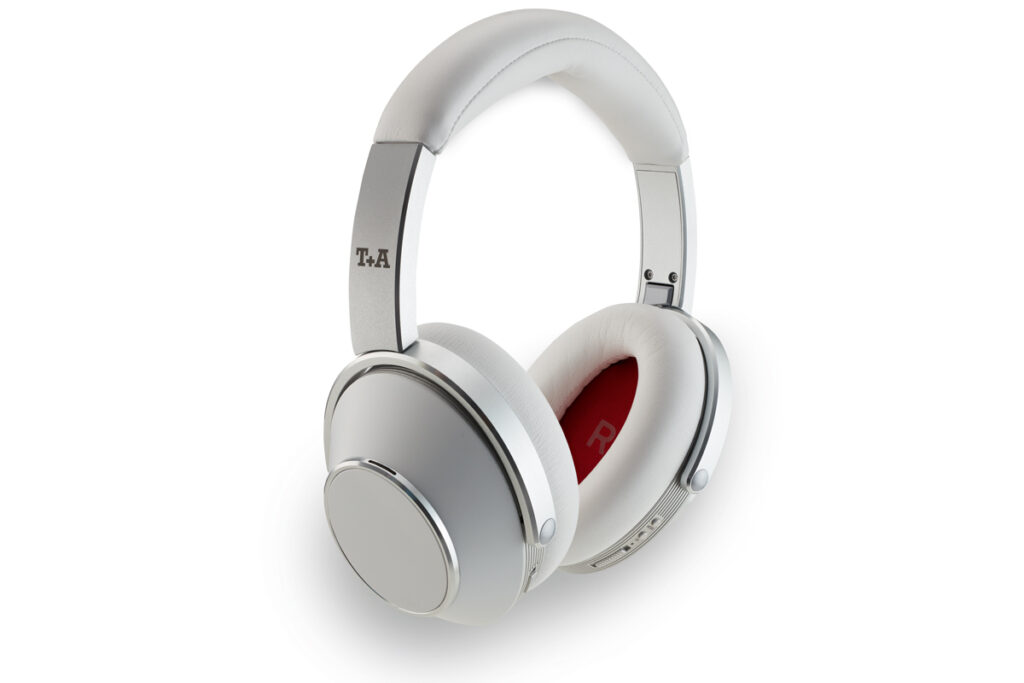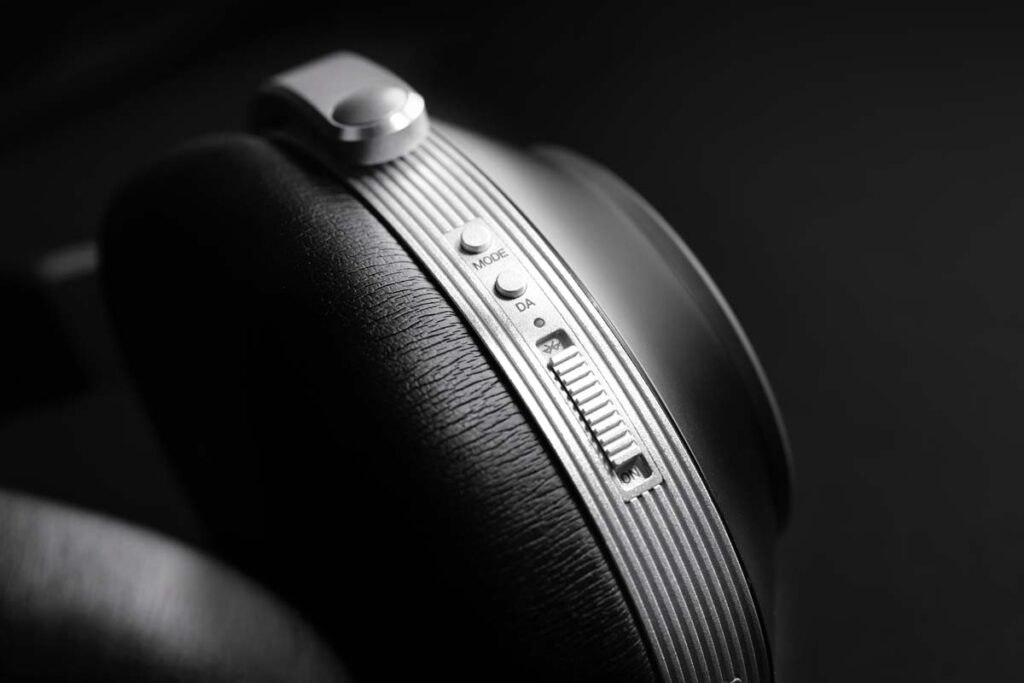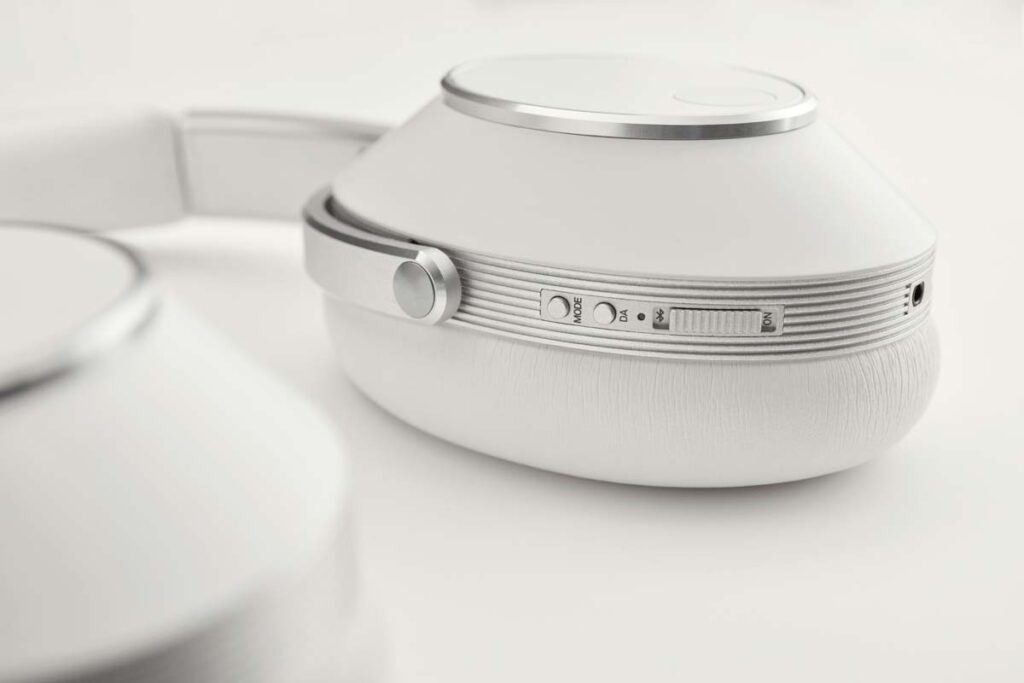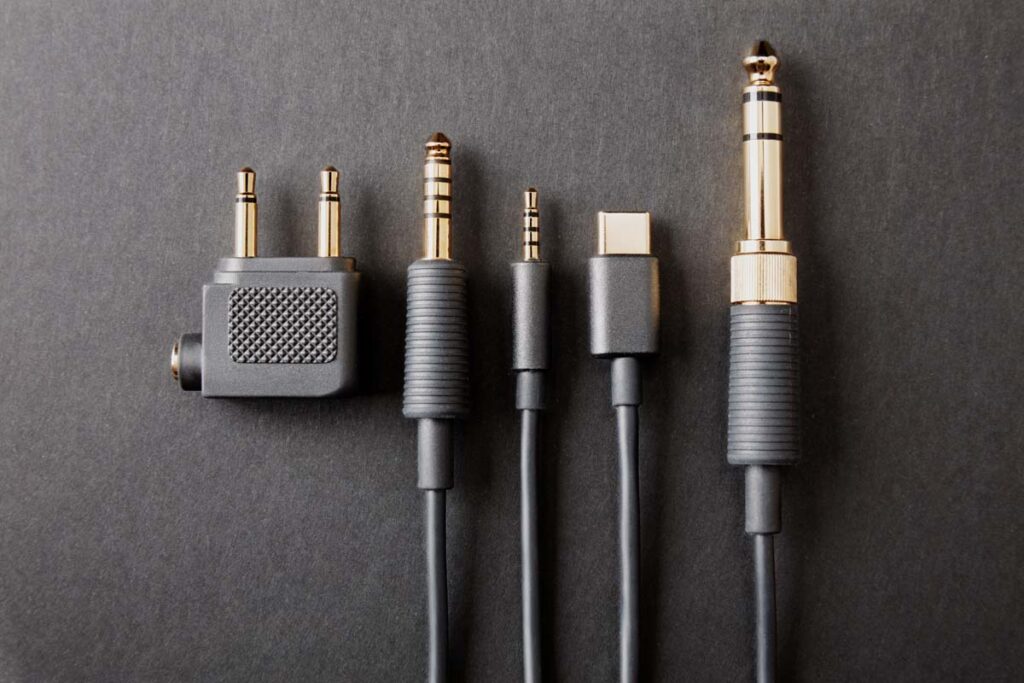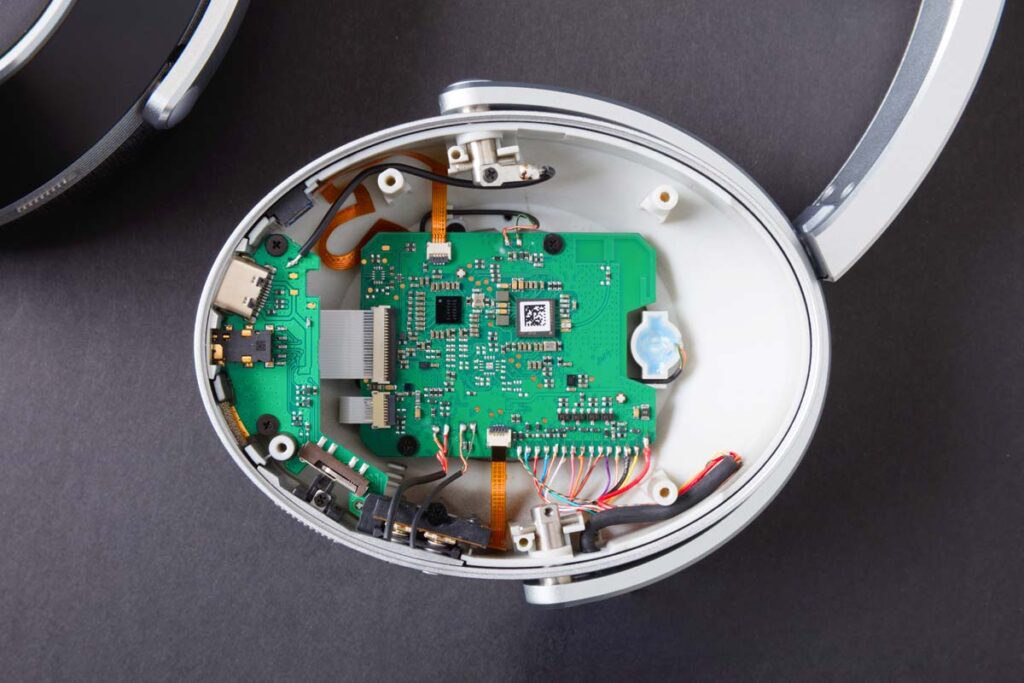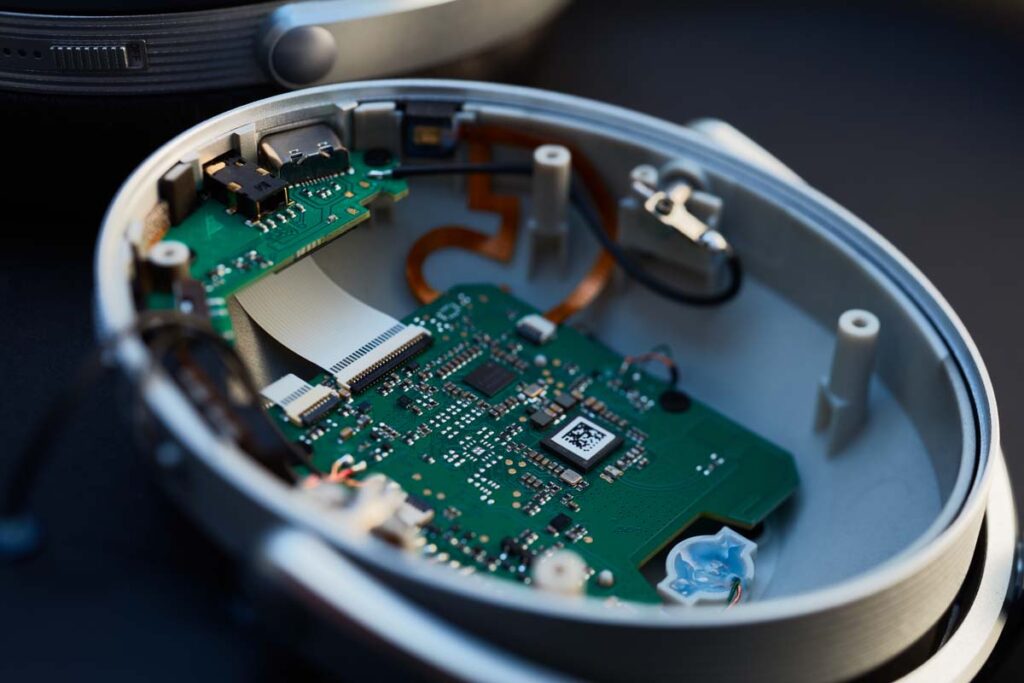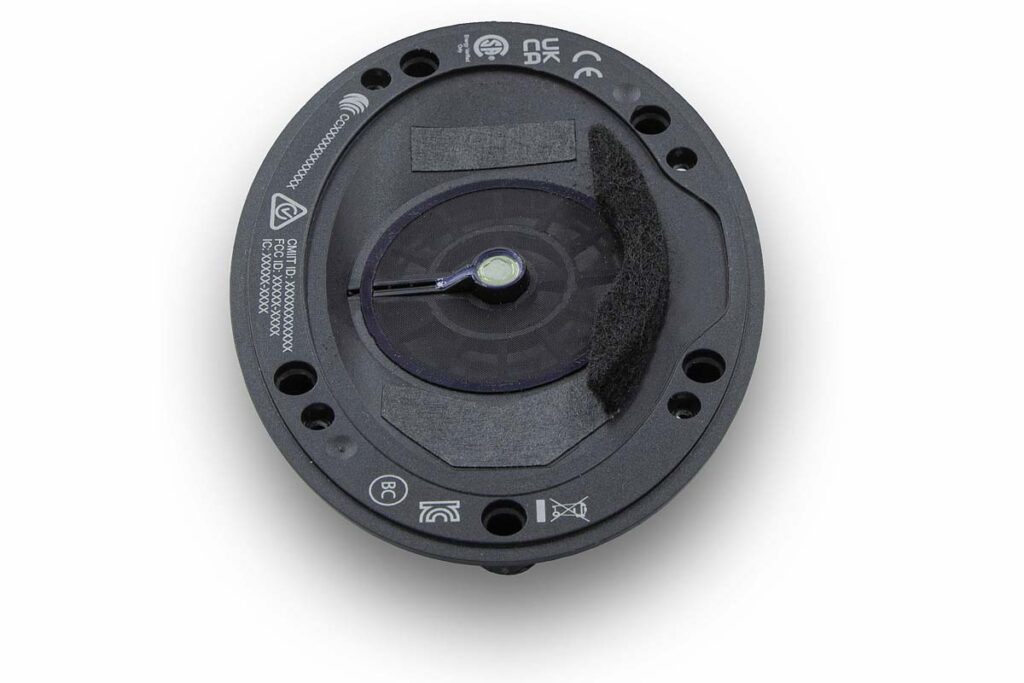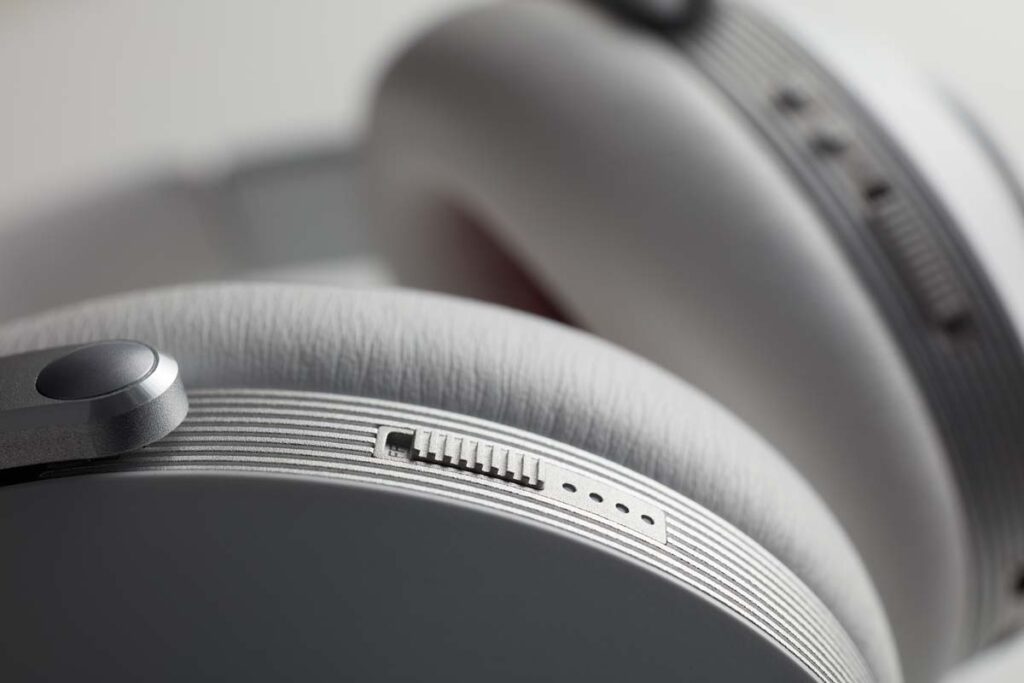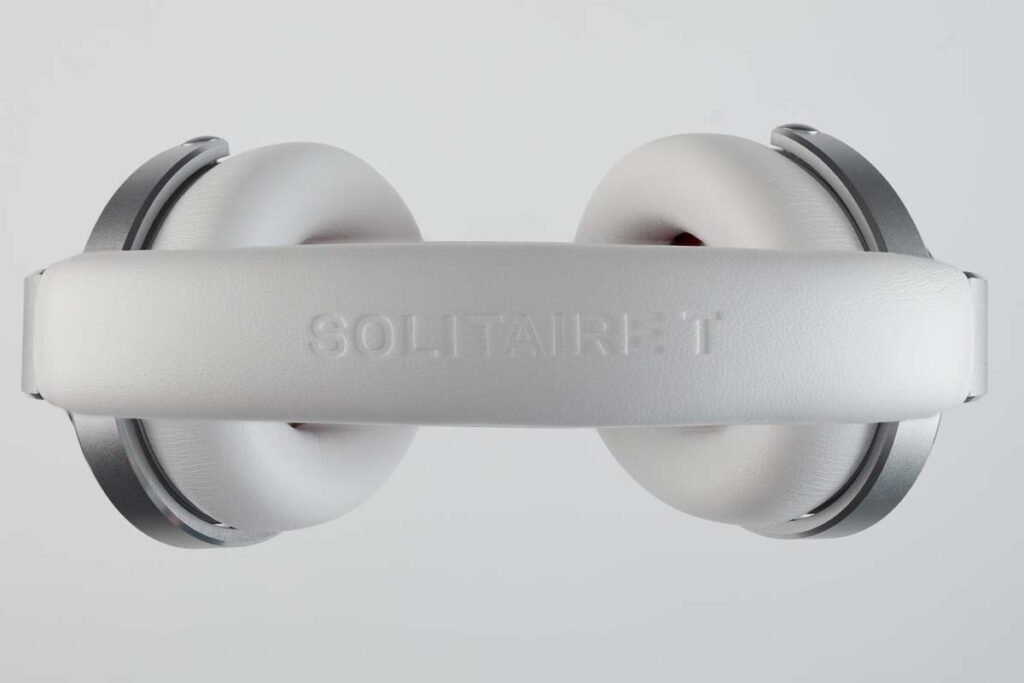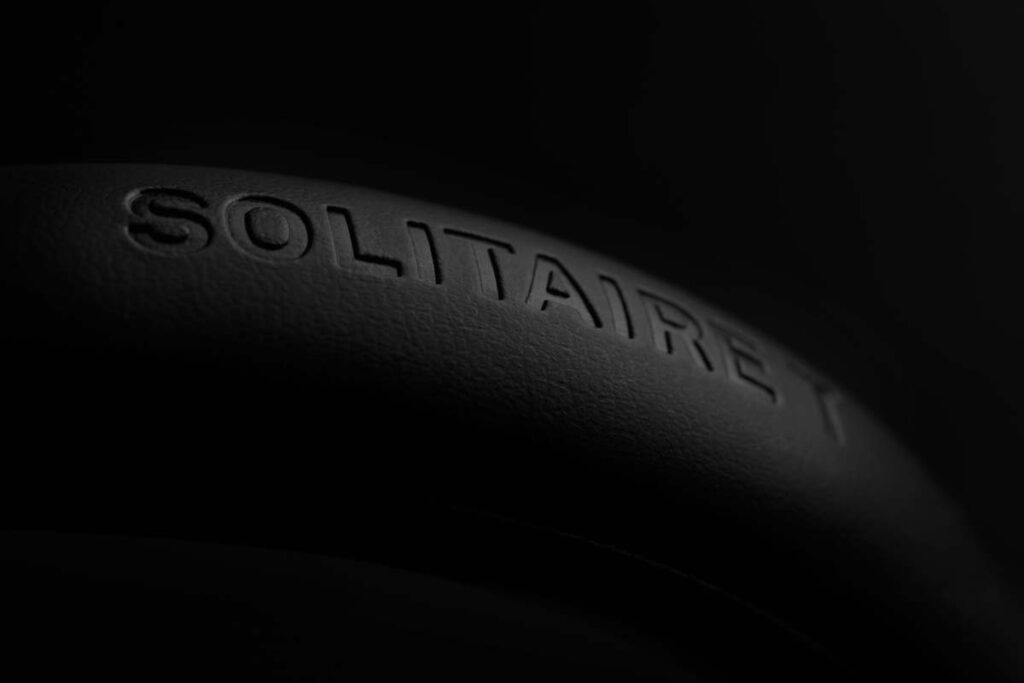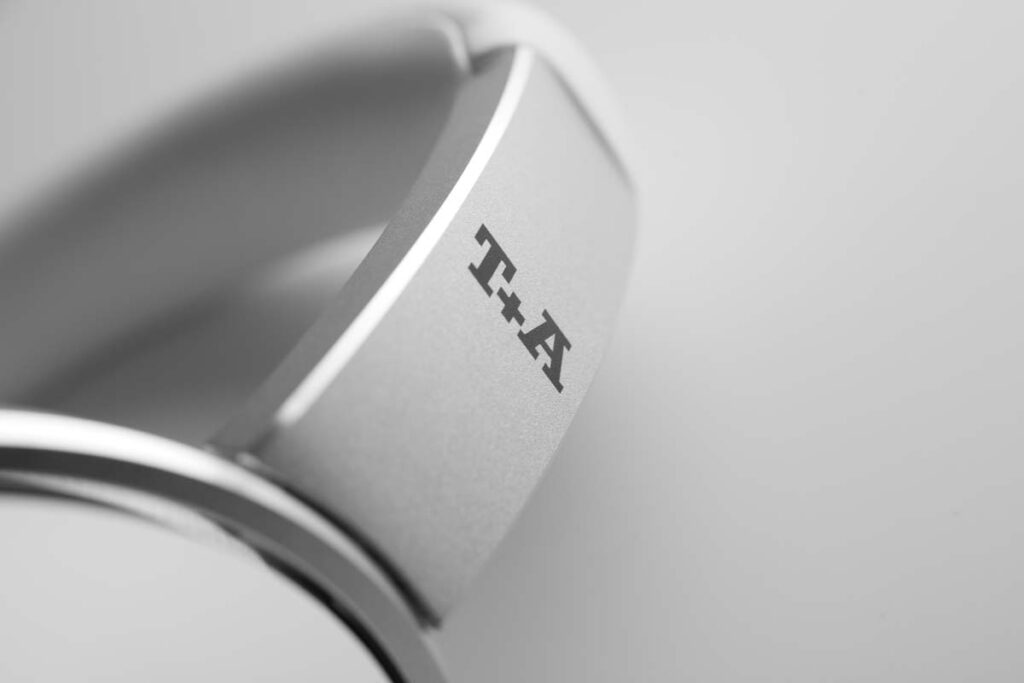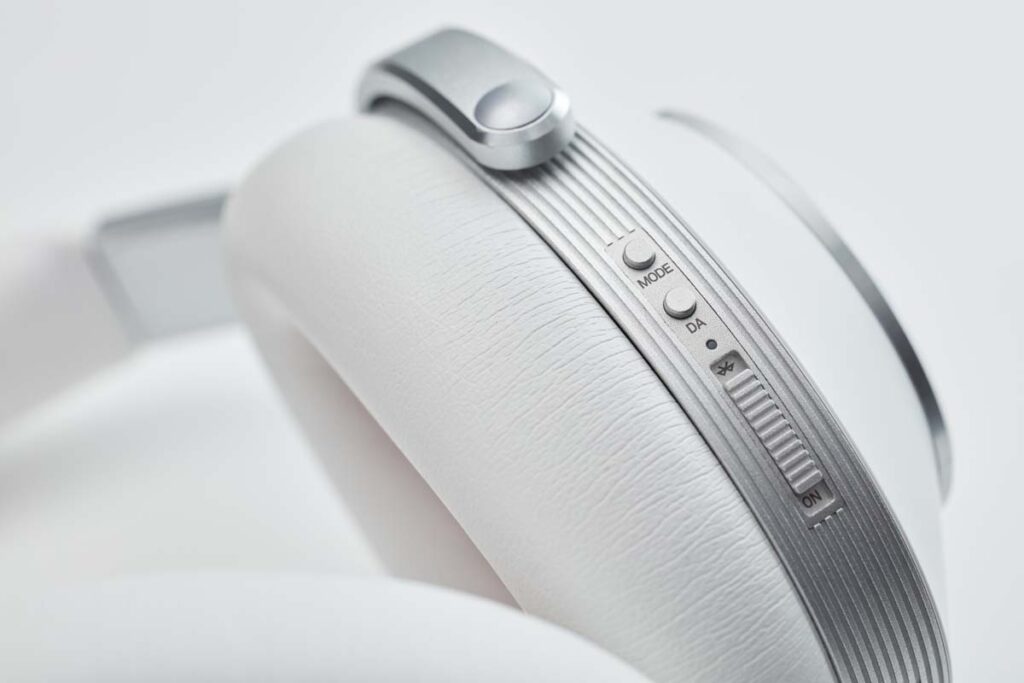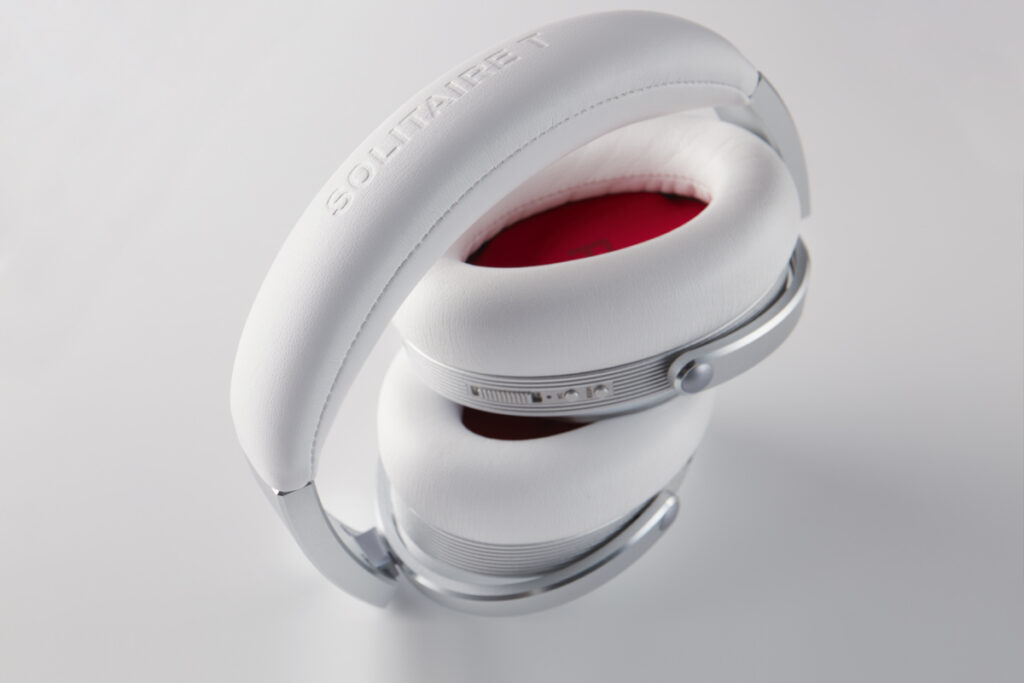Sound or usability? Focus or variety of possibilities? High-end or portable? T+A builds a headphone that provides an astonishing answer to all these questions: T+A Solitaire T.
Since my search for good headphones can be likened to a tragic opera at this point, it doesn’t hurt to approach the topic of my encounter with the T+A Solitaire T in an appropriate way.
First scene: In front of the theater
It begins far from the quiet seclusion of my music room or studio. Far away from top-notch headphone amplifiers, temperature-controlled sources and the most important ingredient: silence. The ICE high speed train from Berlin to Stuttgart (I’ll refrain from ranting about the train) is a nuisance in most cases, but not a place to immerse myself in great music. That’s why a movie is playing on the laptop, and the T+A is along for the ride to ensure that the noisy environment stays where it belongs. Connected via Bluetooth, the Solitaire T uses passive (mids and treble) and active (mid-bass and low end) noise suppression to shield itself amazingly well from the outside world. A brief comparison with a Sony WH-1000 XM5, which was also traveling with us, shows that T+A is taking a pretty convincing approach with this combined solution: It is simply quieter on the ear, and the pressure on the eardrums that can always be felt with fully active solutions also remains at a pleasingly low level. It can’t be completely avoided, but I can live with it in such fine doses.
So far, so quiet, let the movie begin. Fortunately, this is a production with a thoroughly impressive soundtrack, which reminds me why I have the T+A with me in the first place. For the first time, Hans Zimmer’s rather dull soundscapes don’t sound annoying through headphones. As expected, the T+A transmits in a linear fashion, but at the same time manages to position the fundamental tone and bass powerfully in a customer-oriented manner without even glancing in the direction of the cheap effects box.
Second scene: Backstage
Now the Solitaire T can – or rather, must – assert itself in the studio. Most cheaper Bluetooth headphones fail here immediately because they are usually developed like cheap monitor speakers: cheaply sourced drivers are placed in a custom-designed box, and the built-in DSP is supposed to prevent the resulting contraption from sounding as bad as the development process. In contrast to this common strategy, T+A developed the Solitaire as a pure analogue headphone, which was only digitized afterwards when it sounded good on its own. And so you can tell from the very first notes that music sounds unspectacularly natural through the T+A. Unlike most of its colleagues, it’s completely devoid of that unnatural quality of a photoshopped cover girl. The cellulose membranes hang very alertly on the Crane Song amplifier, even small tweaks on the equalizer, the adjustment of reverb tails or running times of different tracks in a recording are effortlessly reproduced, the T+A simply does its job. And that in a quality that is absolutely astounding. First-class headphones from Neumann and Sennheiser only sound different in direct comparison, not better. It’s also fascinating that the T+A doesn’t really let up when it comes to the showpiece disciplines of its open colleagues, i.e. spatial representation and openness of sound. T+A has developed a closed concept here that I would describe without hesitation as one of the best on the market.
Third scene: On stage
Bluetooth has limitations. That’s a shame, but it can’t be changed. The T+A Solitaire T can’t work magic here either, but it can push the boundaries a little with clever strategies. The Bluetooth chip from market leader Qualkomm can also be found here, but is not fully utilized in order to avoid the weaknesses of this component. The noise suppression comes from Sony, while the conversion is left to ESS Sabre in HQ mode. In this case, the amplification also bypasses the Sony circuitry and is handed over to in-house-developed Class A power amplifiers. These first-class electronics combined with headphones that work cleanly by nature can really only roll on the road to success, and that’s exactly what happens. Even if the bandwidth and dynamics are somewhat lower via Bluetooth, the Solitaire’s very clean and straight sound remains unchanged. Compared to wired operation, everything seems a little more overcast, but with the same characteristics. Without ANC and in high quality mode, almost none of the usual BT background noise can be heard. If you activate the noise suppression, the level of noise increases slightly, but the environment is blocked out very thoroughly and, once again, the basic sound character does not change. I’ve never heard this before in this form, because normally these functions intervene quite thoroughly in the sound. With all these ingredients, the Solitaire achieves the feat of making you feel closer to audiophile heaven than ever before while sitting on a park bench. And even in louder environments than on a lonely bench with a view of a nature reserve, the T+A performs excellently.
The HQ mode provides such an increase in dynamics, air and depth that any other setting is actually out of the question. The Solitaire masters the weaknesses of the Bluetooth concept so well that I listen in this mode again and again at home without ever looking for the cables. That’s definitely never happened to me before.
Fourth scene: In heaven
The final scene is the music room. Headphone amplifiers from Lehmannaudio and Lake People are ready and waiting, with a Mark Levinson 390S and Transrotor’s mighty Apollon providing the signals. So far, everything has been good and actually better than the competition. However, it was mostly about “high end on the road”, which makes for an accordingly low bar. Now the T+A works passively, which means that all digital components are deactivated and the Solitaire works like a normal pair of headphones. Once again, it becomes clear just how much can be gained by approaching the subject of headphones seriously, designing an analog foundation that is beyond reproach and only then bringing the digital helpers into the race. The legendary Ring production with the Staatskapelle Dresden under Marek Janowski (Eurodisc Vinyl) also takes you to higher spheres within a few moments with this “on-the-go can”. The Solitaire’s finely differentiated reproduction of delicate tonal changes (violins in “In der Esche Stamm leuchtet ein Blitz”!!!) outclasses more than a few traditional high-end headphones. And the spatial depth of Dresden’s St. Luke’s Church, where this production was recorded, is another thing other headphones should try and reproduce. A big compliment to Herford. Because all the musicians don’t appear to be suspended on a string tightened between the ears, but rather form a believable picture, far and deep.
Another chapter about hell can be omitted, there is actually only light here, no shadow. The fact that the Solitaire T costs a little more than the competition is easy to get over in view of the effort put in and the quality on offer. Especially as we are still in a price range where others can’t even find a power cord …
Accompanying Equipment
Turntable: Transrotor Apollon TMD with SME 5, SME 3012 and others | Cartridges: Clearaudio Talisman and Stradivari V2, Ortofon Vienna and Jubilee, Denon DL-103 | CD-Player: Mark Levinson No. 390S | DAC: Merging Technologies | Preamplifier: Crane Song Avocet | Power amplifier: Digital power amplifier based on ICE Power, Accuphase P-4200 | Integrated amplifier: Lavardin IT | Loudspeakers: Spendor Classic 3/5, Wilson Audio Sasha DAW | Cables: Vovox and others
Headphones T+A Solitaire T
Concept: circumaural closed BT headphones with DAC and cable operation | Drivers: selected, low tolerance, dynamic | Frequency response: 4 Hz to 22 kHz (active), 4 Hz to 45 kHz (passive) | Impedance, passive: 64 Ω | Microphones: 2 communication microphones on the right, 2 noise-canceling microphones per side | Noise cancellation: hybrid | Bluetooth: Version 5. 1, Class 2 (SBC, AAC, aptX, aptX HD) | Accessories: Hard case, USB-C charging cable, 3.5 mm jack cable with adapter to 6.35 mm, airplane adapter, Pentaconn cable | Weight: 326 g | Warranty period: 2 years | Price: around € 1300
T+A Elektroakustik
Planckstraße 9-11
32052 Herford
Phone +49 5221 76760
info@ta-hifi.de

